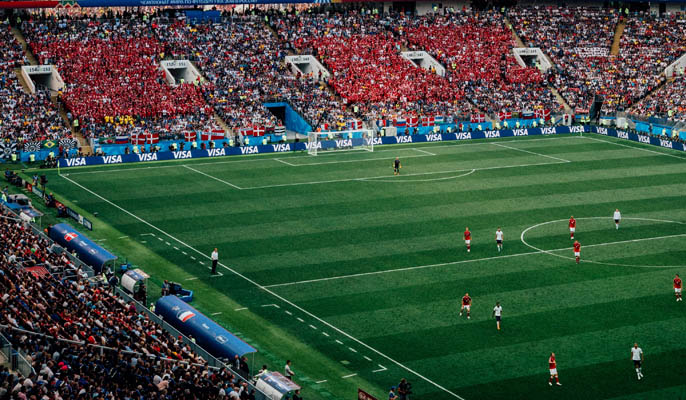
It’s just been announced that UEFA are moving the Euros to June 2021! While we agree it’s the best solution considering the uncertainty of the current Coronavirus epidemic, we’re struggling to cope with the lack of football on Saturdays. To help fill the football shaped void you may have developed, here is an article about the history of the nation’s favourite sport in Britain.
The World’s Game:
Football is the world’s most popular ball game in terms of participants and spectators. Simple in its principal rules and essential equipment, the sport can be played almost anywhere, from official pitches to beaches. Football’s governing body, FIFA (Fédération Internationale de Football Association), estimated that at the turn of the 21st century there were approximately 250 million football players worldwide, and in 2010 a combined television audience of more than 26 billion watched football’s premier tournament, the World Cup.
The Background:
Modern football originated in Britain in the 19th century. Since before medieval times, “folk football” games had been played in towns and villages according to local customs and with a minimum of rules. Industrialization and urbanization, which reduced the amount of leisure time and space available to the working class, adding insult to the injury of historical legal prohibitions against particularly violent and destructive forms of folk football, which undermined the game’s status from the early 19th century onward.
However, football was taken up elsewhere as a winter game between residence houses at schools such as Winchester, Charterhouse, and Eton. Each school had its own rules; some allowed limited handling of the ball and others did not. The variance in rules made it difficult for public schoolboys entering university to continue playing except with former schoolmates. As early as 1843 an attempt to standardize and codify the rules of play was made at the University of Cambridge, whose students joined most public schools in 1848 in adopting these “Cambridge rules,” which were further spread by Cambridge graduates who formed football clubs.
In 1863 a series of meetings involving clubs from metropolitan London and surrounding counties produced the printed rules of football, which prohibited the carrying of the ball. Thus, the “handling” game of rugby remained outside the newly formed Football Association (FA). Indeed, by 1870 all handling of the ball except by the goalkeeper was prohibited by the FA.
The Development:
The development of modern football was closely tied to processes of industrialization and urbanization in Victorian Britain. Most of the new working-class inhabitants of Britain’s industrial towns and cities gradually lost their old pastimes, such as badger-baiting, and sought fresh forms of collective leisure.
From the 1850s onward, industrial workers were increasingly likely to have Saturday afternoons off work, and so many turned to the new game of football to watch or to play. Key urban institutions such as churches, trade unions, and schools organized working-class boys and men into recreational football teams. A rise in adult literacy at the time spurred press coverage of organized sports, while improvements in transport systems such as the railways or urban trams enabled players and spectators to travel to football games.
Average attendance in England rose from 4,600 in 1888 to 7,900 in 1895, rising to 13,200 in 1905 and reaching 23,100 at the outbreak of World War I. As it grew, football’s popularity eroded public interest in other sports, notably cricket.
Despite sometimes fractious international relations, football continued to rise in popularity. It made its official Olympic debut at the London Games in 1908, and it has since been played in each of the Summer Games (except for the 1932 Games in Los Angeles). FIFA also grew steadily, especially in the latter half of the 20th century, when it strengthened its standing as the game’s global authority and regulator of competition. Guinea became FIFA’s 100th member in 1961; at the turn of the 21st century, more than 200 nations were registered FIFA members, which is more than the number of countries that belong to the United Nations.









Be the first to respond